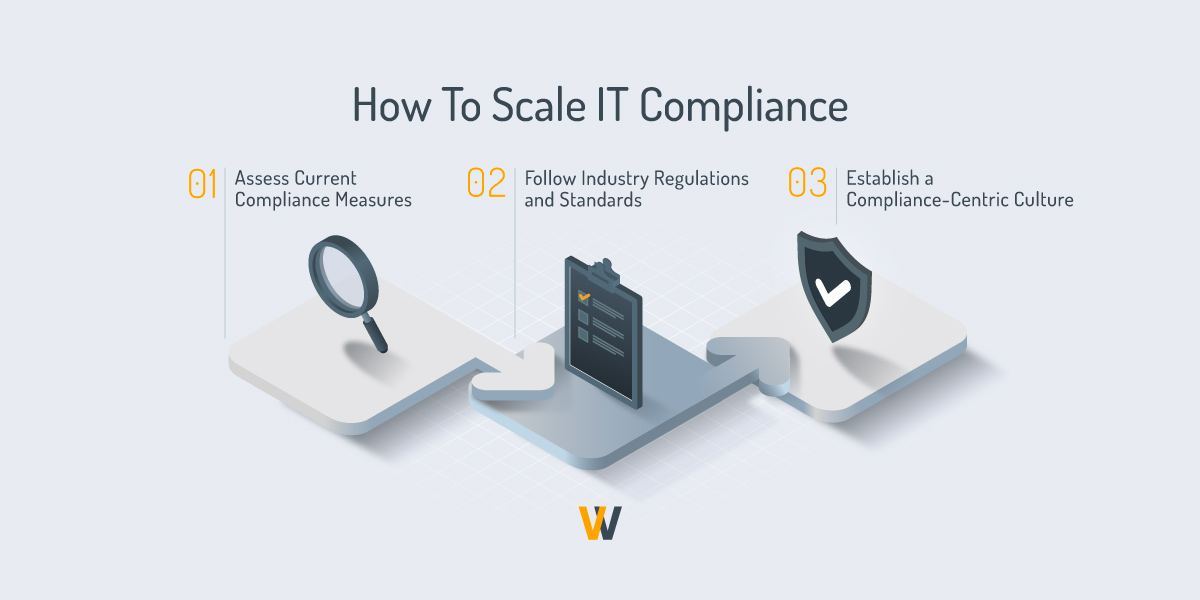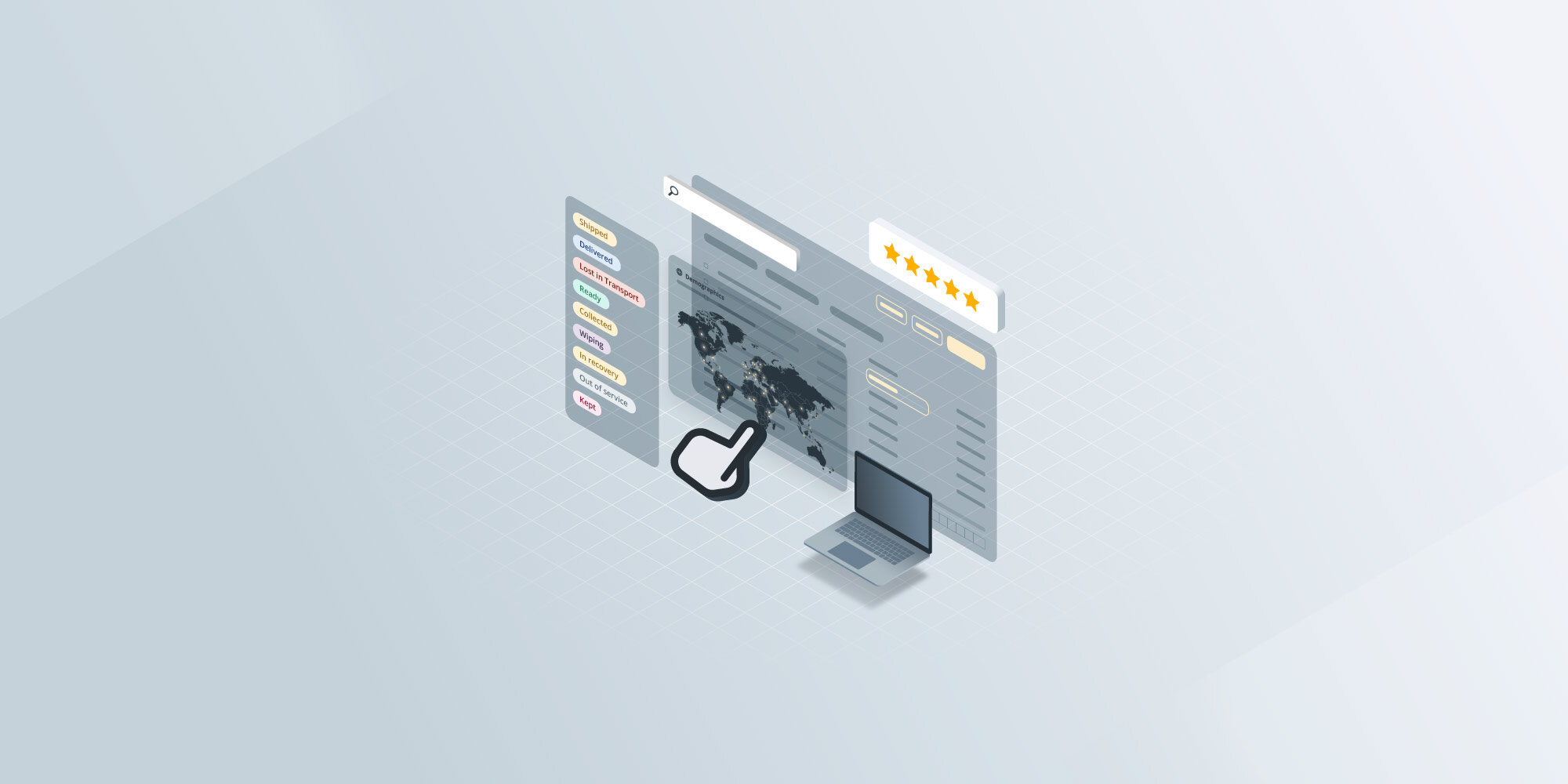Scaling IT compliance: A blueprint for enterprise success
 Mara Quintanilla
Mara Quintanilla
Adhering to IT compliance standards may appear straightforward at first glance, but these regulations can be a complex maze for IT teams. Not to mention that failing to meet compliance standards can cost businesses up to $4 million in fines, penalties, and loss of revenue, according to Globalscape.
Achieving enterprise success requires more than just meeting regulatory requirements. It demands a strategic approach to scaling IT compliance that aligns with organizational objectives, enhances cybersecurity, and fosters a culture of accountability. Implementing specific benchmarks, such as those from CIS, is crucial to ensure compliance with various regulatory frameworks and industry standards.
In this article, we’ll delve into the blueprint for scaling IT compliance, emphasizing common compliance regulations, the importance of compliance, the integration of compliance strategies into business processes, and how to build a solid foundation for your organization.
What is IT compliance?
IT compliance is the process that organizations use to ensure they adhere to a specific set of privacy and IT security policies, requirements, guidelines, and best practices. Companies incorporate these rules into everyday procedures, systems, and IT practice tools to safeguard customer data.
Regulatory bodies formulate guidelines to ensure organizations have clear instructions for meeting compliance standards. These guidelines specify the rules for handling data, digital communication, and critical infrastructure.
Different industries have specific compliance laws. Highly regulated industries, such as healthcare and finance, require organizations to protect patient privacy and confidentiality or securely store payment information for e-commerce businesses.
The Chief Compliance Officer (CCO) oversees compliance risk within organizations. Working alongside a compliance department, the CCO ensures adherence to regulations by developing controls and managing compliance issues.
An organization must comply with all the guidelines and considered compliance standards to avoid violations. This not only safeguards the IT security of businesses and customers but also encourages the accessibility and consistency of services while ensuring that businesses use the software as intended.
Not meeting IT compliance standards can result in lost sales, legal fees, data recovery costs, and fines. A breach can harm your company’s reputation and lead to customer loss. Legal fees and penalties depend on the severity of the breach and the regulation that has been violated. For instance, HIPAA violations start at $127 per event and can cost up to $1,919,173 if not corrected within 30 days.
7 common IT compliance standards

1. General Data Protection Regulation (GDPR)
The General Data Protection Regulation came into effect in 2018 and was designed to protect citizens' privacy in the European Union (EU). Under this regulation, all EU citizens must consent before processing their data.
This legislation also includes specifications on how data must be transferred and secured. The GDPR applies to various data types, such as names, addresses, health data, political opinions, biometric data, racial or ethnic data, sexual orientation, and web data.
2. Payment Card Industry Data Security Standard (PCI DSS)
The Payment Card Industry Data Security Standard (PCI DSS) refers to twelve IT security requirements related to credit card and financial information governing their security. The PCI DSS applies to businesses that conduct online transactions requiring storing, transmitting, and managing a user's financial information. Adhering to the PCI DSS promotes transparent network security and trust among clients who conduct transactions through the business's web services.
3. Sarbanes-Oxley Act (SOX)
The Sarbanes-Oxley Act (SOX) is a financial compliance standard that applies to any publicly traded company in the United States and publicly traded foreign companies that do business there. This standard mandates full disclosure of a company's financial information and applies to any publicly traded corporation or industry launching an initial public offering.
4. Health Insurance Portability and Accountability Act (HIPAA)
The Health Insurance Portability and Accountability Act (HIPAA) was enacted in 1996 to protect sensitive health information and prevent the unauthorized disclosure of patient data. HIPAA impacts health plan numbers, medical record numbers, biometric identifiers, identifiable photos, medical diagnoses, treatment information, medical test results, and prescription information.
5. Gramm-Leach-Bliley Act (GLBA)
The Gramm-Leach-Bliley Act (GLBA) applies to financial institutions that offer financial advice, insurance, or loans. This regulation requires them to disclose their data protection measures and information-sharing policies. To comply, institutions must disclose their policies and request customer consent. Customers can opt out of information sharing with certain third parties.
6. Federal Information Security Management Act (FISMA)
Federal agencies must follow the Federal Information Security Management Act (FISMA), which mandates the development of information security plans to protect sensitive information. This act also requires the implementation of various IT security software and systems and the verification of third-party vendors. FISMA considers the security requirements of other federal departments as well.
7. Service Organization Controls (SOC 1 & SOC 2)
Service Organization Controls (SOC) are cybersecurity reports created by the American Institute of Certified Public Accountants (AICPA). SOC-certified organizations must undergo regular audits to assess their controls over information technology and related processes, policies, and operational procedures. The most commonly used reports are SOC 1 & SOC 2.
IT Asset Management compliance checklist

Implementing a robust IT asset management compliance checklist is essential for organizations that manage compliance risks effectively and ensure adherence to regulatory requirements. This checklist is a strategic tool to systematically manage, track, and secure IT assets, enhancing the organization's IT security posture and minimizing the risk of data breaches. Here are key elements to include in your IT asset management compliance checklist:
-
Inventory Management: Ensure all IT assets, including hardware and software, are accounted for and adequately documented.
-
Software License Compliance: Verify that all software licenses are current and compliant with industry standards.
-
Data Protection Measures: Implement measures to safeguard sensitive information and prevent unauthorized access.
-
Integration with Compliance Framework: Align IT asset management practices with broader compliance strategies and frameworks.
-
Regular Audits and Assessments: Conduct periodic audits and assessments to identify and address compliance issues proactively.
-
Guidelines for Decommissioning: Establish clear procedures for the decommissioning and disposal of IT assets to protect confidential information.
-
Ongoing Updates: Maintain and regularly update the compliance checklist to adapt to new regulations and organizational changes.
Implementing a robust IT asset management compliance checklist is essential for organizations that manage compliance risks effectively and ensure adherence to regulatory requirements. This checklist serves as a strategic tool to systematically manage, track, and secure IT assets, thereby enhancing the organization's IT security posture and minimizing the risk of data breaches. Here are key elements to include in your IT asset management compliance checklist:
-
Inventory Management: Ensure all IT assets, including hardware and software, are accounted for and adequately documented.
-
Software License Compliance: Verify that all software licenses are current and compliant with industry standards.
-
Data Protection Measures: Implement measures to safeguard sensitive information and prevent unauthorized access.
-
Integration with Compliance Framework: Align IT asset management practices with broader compliance strategies and frameworks.
-
Regular Audits and Assessments: Conduct periodic audits and assessments to identify and address compliance issues proactively.
-
Guidelines for Decommissioning: Establish clear procedures for the decommissioning and disposal of IT assets to protect confidential information.
-
Ongoing Updates: Maintain and regularly update the compliance checklist to adapt to new regulations and organizational changes.
How to build the foundation for scaling IT compliance?
A solid foundation is crucial for effectively meeting IT compliance regulations and maintaining cybersecurity resilience. This can be achieved through a comprehensive approach that involves assessing compliance risk, aligning with regulatory requirements, and fostering a culture prioritizing compliance. Let's examine the essential steps to developing a successful IT compliance strategy.
Assess current compliance measures
Before scaling IT compliance, evaluating your existing compliance framework is essential. This assessment helps identify strengths and areas for improvement, providing insight into your organization's compliance maturity. By conducting a thorough compliance audit, you can pinpoint which elements of your compliance strategy are practical and which require enhancement.
Follow industry regulations and standards
Compliance is not a one-size-fits-all approach; each industry has unique regulations and standards. Understanding these specifics is crucial for ensuring your organization remains compliant. By staying informed about the latest updates, you can align your compliance framework with industry requirements.
Establish a compliance-centric organizational culture
Creating a culture that prioritizes compliance is vital for organizational success. It involves ingraining compliance into every aspect of the business, from leadership to frontline staff. By fostering a compliance-centric culture, you can ensure employees understand its significance and actively participate in compliance efforts.
Design a risk-based approach to compliance
A risk-based approach to compliance focuses on managing compliance risk effectively. Organizations can allocate resources efficiently and protect sensitive information by prioritizing cybersecurity threats and remote work risks. Also, identify and assess compliance risks related to cybersecurity threats and remote work to take proactive actions.
Pro tips to manage compliance risk in IT Asset Management
Managing compliance risk is critical to any organization’s overall IT asset risk management strategy. Compliance risk refers to the potential for an organization to fail to comply with relevant laws, regulations, and standards, resulting in financial losses, reputational damage, and legal consequences. Organizations must adopt a proactive approach to manage compliance risk effectively in IT asset management. Here are some key strategies:
-
Stay Informed About Regulatory Changes: Regularly update your knowledge of the latest regulatory changes and ensure that all business processes align with compliance requirements.
-
Conduct Regular Compliance Audits and Assessments: Perform routine audits and assessments to identify gaps or weaknesses in the current compliance framework.
-
Integrate Compliance into Overall Risk Management: Incorporate compliance into the organization’s overall risk management strategy to ensure compliance risks are addressed alongside other business risks.
-
Foster a Culture of Compliance: Educate employees about the importance of compliance and provide them with the necessary tools and resources to adhere to compliance guidelines.
-
Leverage Technology for Compliance Management: Utilize automated compliance management tools to streamline processes, monitor activities, and generate real-time reports.
-
Ensure Leadership Sets the Tone for Compliance: Leadership should prioritize compliance at all levels of the organization and set an example for all employees.
Effective IT compliance strategies for long-term success

One of the most significant challenges compliance professionals face is factoring in the many new regulations and guidelines that most compliance frameworks require. These regulations may describe what organizations need to be compliant, but they do not elaborate on how to achieve that.
"Compliance requirements are what I call cosmic frameworks. They proclaim, ‘thou shalt achieve this,’ but aren’t prescriptive about how to do that. It creates an industry of tea leaf readers trying to interpret requirements, which is great for job security but very poor for business outcomes," Tony Sager, SVP and Chief Evangelist at The Center for Internet Security (CIS), explains. Here are a few key strategies to positively impact your organization’s compliance efforts.
-
Adopt a Risk-Based Approach: Focus on managing compliance risks by prioritizing cybersecurity threats to customer data and addressing remote work risks. Develop comprehensive strategies to protect sensitive information and establish secure protocols for remote access and data sharing.
-
Automate Equipment Management: Streamline IT equipment management to enhance compliance with data protection regulations. Use solutions like GroWrk to deploy IT equipment pre-enrolled in MDM software, ensuring security features prevent unauthorized access and data breaches.
-
Integrate Compliance Tools: Find tools that seamlessly integrate with your existing technology stack to unify compliance efforts. Solutions like GroWrk, which is SOC2 certified, can integrate with current tools to maintain compliance across all platforms.
-
Conduct Continuous Monitoring and Audits: Implement guidelines for decentralized IT software management, ensuring continuous monitoring and regular internal and external audits to maintain secure and compliant software use across teams and departments.
-
Foster a Compliance-Centric Culture: Ingrain compliance into every aspect of the business, from leadership to frontline staff, to ensure employees understand its significance and actively participate in compliance efforts.
Ensuring global compliance in your IT asset management
Compliance is not confined to a single set of regulations in the global business landscape. Instead, organizations must navigate a complex web of regional, national, and international standards. Whether it's the General Data Protection Regulation (GDPR) in Europe or state privacy laws in the U.S., the challenge lies in ensuring compliance across diverse regulatory landscapes and effective risk management.
This is where a global provider like GroWrk becomes an ally in meeting each new compliance standard regardless of location. GroWrk simplifies IT compliance for global enterprises through our end-to-end equipment management platform. We can pre-enroll devices in our clients’ chosen MDM solution so that the equipment arrives at the end user’s hands and is ready to use. We also wipe devices after an employee offboarding to avoid data leaks.
Why is scaling IT compliance important in 2025?

As technology continues to evolve, cybersecurity threats grow more sophisticated and damaging. For businesses, IT compliance is not just about meeting regulatory requirements or compliance enforcement; it is a critical component of strategic growth and risk management.
A study from 2020 revealed that non-compliance cost businesses an average of $14.82 million, emphasizing the financial impact of failing to adhere to compliance standards. This underscores the importance of scaling IT compliance efforts to safeguard against future challenges.
Looking ahead, businesses must address emerging issues such as the ethical implications of advanced artificial intelligence systems, increased due diligence to combat financial crimes, and expanding cryptocurrency regulations. Additionally, prioritizing environmental, social, and governance (ESG) concerns will become increasingly vital.
In 2025, there are several key compliance challenges that companies need to prioritize:
- Addressing the ethical implications of advanced artificial intelligence systems
- Increasing due diligence to combat financial crimes
- Navigating a constantly changing sanctions environment
- Managing the growing regulations around cryptocurrencies
- Prioritizing environmental, social, and governance (ESG) concerns.
These trends demand a proactive approach, ensuring alignment with ethical standards, adapting to evolving compliance regulations, and fostering a culture of accountability. Companies must stay informed and adapt to these changes to remain compliant and succeed.
Wrapping up
In an era of constantly evolving regulatory landscapes, organizations need a compliance partner who is not only current but also future-ready. GroWrk's commitment to staying ahead of regulatory changes ensures that your organization is equipped to meet new compliance standards as they emerge. With GroWrk by your side, the intricate task of ensuring global regulatory compliance becomes an achievable reality.
As regulations evolve, proactive efforts to integrate compliance into every facet of operations will ensure legal adherence and enhance cybersecurity, customer trust, and long-term growth. With a robust compliance strategy, businesses can navigate IT compliance and position themselves for sustained success in a digitally driven world.
At GroWrk, we ensure that our internal processes comply with current regulations. We enforce strict access controls, utilize advanced encryption methods, employ regular security audits, and maintain a culture of security awareness within our organization that will ensure your data is always protected.
Do you care to know more about how our services can improve your IT compliance strategy? Schedule a demo today.
FAQs
IT security vs. IT compliance
IT security focuses on safeguarding digital assets from cyber threats through firewalls and encryption. IT compliance involves adhering to regulations, compliance guidelines, and industry standards to ensure legal and ethical operation. While related, security protects against threats, while compliance ensures alignment with rules.
What are some common challenges in implementing compliance?
Complying with regulations can be complex, involving keeping up with changing rules and working within resource limitations. Coordinating between different departments, raising employee awareness, and ensuring vendor compliance can also be difficult. Moreover, compliance professionals must balance data privacy, upgrading outdated systems, promoting cultural shifts, and ensuring constant monitoring.








